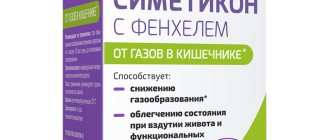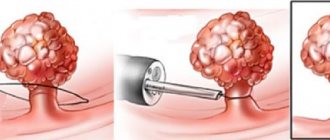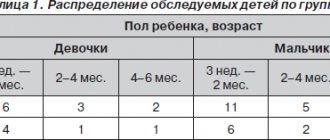How to treat flatulence?
October 25, 2021
27526
4.7
9
Content
- Symptoms of bloating
- What foods cause bloating?
- What causes bloating?
- The best drugs for bloating
- Espumisan
- Pankreoflat
- Meteospasmil
- Plantex
- Simethicone with fennel from Evalar
- Folk remedies for flatulence
We can talk about bloating when the volume of gases in the intestines increases from normal 700-1500 ml to 3000 ml or more. Intestinal gases include: hydrocarbons, carbon dioxide, methane, nitrogen. Gases accumulate in the intestines when a person swallows air with food, consumes foods that cause fermentation, while talking, smoking, inflammatory diseases of the throat, wearing braces and dentures; gases are also released by the intestinal microflora.
Some diseases can also cause increased gas formation:
- colitis;
- enteritis;
- cholecystitis;
- gastritis;
- hepatitis;
- cirrhosis;
- bile stagnation;
- Crohn's disease;
- infectious pathologies;
- neoplasms in the intestines;
- worm infection.
Typically, a large accumulation of gases causes discomfort and unpleasant symptoms: a feeling of fullness in the intestines and often pain. Read also : Top 10 best colic remedies for newborns In most cases, colic in newborns occurs due to the immaturity of the digestive system. Fortunately, you can buy medicine at the pharmacy that will relieve your baby of abdominal pain.
Causes of gas formation in the gastrointestinal tract
Despite the fact that flatulence is classified as a problem associated with the gastrointestinal tract, there are initial stages that negatively affect the condition of the intestines, by eliminating which you can independently eliminate the accumulation of gases.
Physiological reasons
- Frequent consumption in the diet of foods that affect gas formation (brown bread, kvass, legumes, cabbage, fats). This leads to the fact that the intestines cannot cope with the timely removal of accumulated gases.
- If you frequently swallow air while eating, this happens when you eat hastily or smoke.
- Flatulence in most people is caused by problems with the gastrointestinal tract. But a similar phenomenon is also often observed after 50 years, when the intestinal walls atrophy, they weaken and become prominent, which contributes to the accumulation of gases.
During pregnancy
- In the third trimester, irregular gases often occur, accompanied by belching, constipation and heartburn. The reason for this is compression of the intestines due to an enlarged uterus.
- Progesterone, produced by the placenta to maintain pregnancy, has a relaxing effect, which causes gas retention.
- A woman expecting a baby increases the load on the pancreas and liver. This leads to digestive disorders and increased formation of gases.
- If the breakdown and absorption of substances by the body is impaired, insufficient fermentation of the esophageal fibers occurs, which provokes fecal retention and the inability to remove excess gases.
Infectious diseases
Inflammatory processes that occur under the influence of microorganisms (pathogenic) and affect the large and small intestines, leading to disruption of the digestive system. The result is the inability to move gases through the intestinal walls.
- Acute intestinal infections, in which diarrhea, nausea, vomiting and colic occur. The accumulation of gases occurs during rotavirus infection, dysentery, salmonellosis, gastritis and other gastrointestinal lesions.
- Intestinal candidiasis. When immunity decreases, fungal flora is activated, which is an ideal environment for flatulence.
- An intestinal infection caused by Giardia (single-celled parasites) that live in the lumen of the small intestine. If this cause of flatulence is present, the patient will lose a lot of weight, and there will be increased excitability and irritability.
- The presence of helminthiases in the body provokes swelling and bloating. In advanced forms, diarrhea with blood and rectal prolapse are characteristic.
Dysbacteriosis (changes in the normal intestinal flora) becomes the main cause of the development of infectious diseases that cause flatulence. There is a disruption of natural processes that go into the fermentation stage, thereby provoking gas formation.
Pathology of the large intestine
- Inflammatory processes for a long time, which were not treated in any way.
- In the presence of benign tumors, intestinal polyps, which slowly but progress. Constant flatulence, blood in the stool, acute fighting sensations can become the first signs of the development of cancer.
- With enlargement of the colon (congenital or acquired). The pain occurs both locally and diffusely, which makes it difficult to accurately determine the location of the anxiety in the gastrointestinal tract.
- When the structure of the intestinal wall is disrupted, it protrudes and the formation of air cysts. These are the reasons why the process of gas removal from the intestines slows down.
Diseases of the stomach and esophagus
- Flatulence can occur with lesions of the digestive tract (hernia, reflex disease).
- Gastritis with high acidity is also a cause of poor gas removal.
Purulent processes
- Peritonitis.
- Chronic appendicitis, abscess.
Problems with the genitourinary system
- Acute prostatitis negatively affects nearby organs, that is, the intestines.
- Severe form of pyelonephritis, renal colic, during which compression of the intestines occurs.
Endocrine system disorders
- Low thyroid hormone levels.
- Premenstrual syndrome.
causes and symptoms of flatulence
Symptoms of bloating
Gas-associated symptoms of bloating:
- increase in abdominal size;
- cramping abdominal pain and cramps;
- the presence of certain sounds (borborygms);
- frequent belching;
- heaviness in the stomach;
- uncontrolled release of gases;
- bowel disorder.
A person with bloating develops anxiety, a feeling of shame, minimizes social contacts and avoids visiting public places. Against this background, stress develops, which, in turn, has an even more negative effect on the intestines.
What foods cause bloating?
If a healthy person eats foods that increase gas formation in the intestines and feels discomfort, you just need to review your diet and eliminate such foods - then no treatment is needed, the discomfort will go away on its own.
There are groups of foods that cause bloating (a negative reaction can occur to either one product or several):
- Products containing coarse fiber or fructose (apples, grapes, onions, tomatoes, cabbage, turnips, legumes and peas).
- Products that cause fermentation in the intestines (rye bread and pastries).
- Products with gluten (cereals, various sausages, sauces).
- Dairy products (when the body has a special enzyme to digest certain proteins and lactose).
To the list of products that cause gas formation, you should also add fast carbohydrates, sweets, sweet carbonated drinks, kvass, beer, etc. By the way, the formation of gases is also affected by how a person eats. You can’t eat on the go, snack frequently, eat a lot of fatty or spicy foods, or talk while eating.
If a person eats too many fruits, vegetables and legumes, fiber and fructose are poorly absorbed (or not absorbed at all) by the body. Such products rot in the intestines, and this is a haven for bacteria. Therefore, if you do not often eat vegetables and fruits, it is better to add them to your diet gradually.
In addition to specific products, some combinations of them also cause increased gas formation. For example: cereals with milk, sour vegetable products and grains, fresh bread with kefir.
In order not to provoke increased gas formation, eat fruits after the main meal, do not combine several types of fruits. It is advisable to bake or stew foods rich in fiber, and peel fruits and vegetables. Before cooking legumes, it is better to soak them. By the way, the safest in terms of gas formation is lentils.
Foods that cause bloating
Photos from open sources
Espumisan
This is perhaps the fastest-acting drug for bloating and rumbling in the stomach. “Espumizan” does not have any effect on the digestive process, is not absorbed into the blood (“works” only in the intestinal lumen), and does not contain lactose and sugar. The active ingredient of the drug is simethicone. This is a safe remedy for bloating, so it can be used at any age. Doctors say that Espumisan does not develop addiction, so it can be used for a long course (more than 14 days). You can buy Espumisan in capsules and drops. The capsules are small in size, easy to swallow, and do not need to be washed down with water. The drug is safe for diabetics and people with lactose intolerance. The relative disadvantages of the product are its high cost and unnatural composition.
Espumisan
Berlin-Chemie/Menarini, Germany
Excessive formation and accumulation of gases in the gastrointestinal tract (flatulence, Roemheld syndrome, aerophagia, increased gas formation in the postoperative period);
preparation for diagnostic studies of the abdominal and pelvic organs (including ultrasound, x-ray studies); symptoms of excessive gas formation caused by functional dyspepsia; acute poisoning with detergents containing foaming agents (as an antifoam agent). from 235
5.0 1 review
2059
- Like
- Write a review
Risk factors
Among the risk factors for the development of ascites, pathologies that can lead to liver cirrhosis are of greatest importance. First of all, these are viral hepatitis B and C, alcoholic hepatitis. Other most common risk factors:
- congestive heart failure;
- renal failure;
- obesity;
- diabetes mellitus type II;
- increased levels of “bad” cholesterol in the blood. [eleven]
Pankreoflat
The active ingredients of this anti-bloating remedy are dimethicone and pancreatin, that is, it is a drug of the enzymatic group. "Pankreoflat" destroys foam in the intestines and works as an enzyme, improving the secretion of the pancreas. An ideal drug for the treatment of bloating due to chronic pancreatitis. After all, with pancreatitis, food is poorly digested and begins to rot in the intestinal lumen. "Pankreoflat" contains enzymes such as lipase, amylase, trypsin - they break down food and help it be absorbed. Pankreoflat is usually prescribed for diseases of the pancreas, liver, biliary tract, gas formation after operations on the gastrointestinal tract, and digestive insufficiency. Take the drug with food - this is how it works best. "Pankreoflat" is well tolerated. But it should be remembered that it cannot be used during treatment with Gastal or Phosphalugel (otherwise the therapeutic effect of Pankreoflat will decrease). The product is contraindicated for pregnant women and breastfeeding.
Pankreoflat
Solvay, Belgium
Pankreoflat is a product containing active enzymes aimed at compensating for exocrine pancreatic insufficiency.
Tablets are used to eliminate the consequences of impaired functioning of the pancreas, in the treatment of digestive disorders, or for the purpose of rehabilitation of a patient after operations on the digestive tract. from 2200
5.0 1 review
635
- Like
- Write a review
Clinical case
A 59-year-old woman, Sh., was diagnosed with stage IV ovarian cancer (adenocarcinoma), ascites, and chronic pain syndrome 2 b according to the ShVO. The patient noticed an increase in the abdomen up to 120 cm in circumference, difficulty breathing, and weight loss. Specific treatment at the place of residence was denied. According to the patient, she was “sent home to die.” Read more…
A 59-year-old woman, Sh., was diagnosed with stage IV ovarian cancer (adenocarcinoma), ascites, and chronic pain syndrome 2 b according to the ShVO.
The patient noticed an increase in the abdomen up to 120 cm in circumference, difficulty breathing, and weight loss. Specific treatment at the place of residence was denied. According to the patient, she was “sent home to die.” Patient Sh. was urgently hospitalized in the specialized department of Euroonko, after active symptomatic therapy aimed at normalizing blood counts and restoring water and electrolyte balance, a peritoneal port was installed. Resolution of ascites was carried out under the control of plasma protein levels. The use of peritoneal ports allows for the removal of ascitic fluid in fractional doses, which ultimately eliminates the occurrence of serious complications in the form of hemorrhagic syndrome associated with hemodilution and coagulopathy as a result of massive entry of ascitic contents into the venous bed.
After stabilization of the general condition, against the background of nutritional support, antiemetic and antisecretory therapy, patient Sh. received specific chemotherapy treatment with good effect. Upon resolution of ascites in the presence of a peritoneal port, intra-abdominal chemotherapy became possible.
Six months after the described hospitalization, the patient returned to her usual lifestyle and continues to receive systemic treatment on an outpatient basis under the supervision of a team of Euroonco specialists. The response to treatment is regarded as positive in the absence of ascites and a total reduction in the size of the lesions by more than 70%. Combined treatment in the format of systemic and local (intra-abdominal) therapy with implantation of a port system is the optimal treatment regimen for this group of patients. In the practice of Euroonco doctors, such cases occur on a regular basis. Hide
Meteospasmil
Another anti-bloating drug with a complex effect, it contains simethicone and alverine citrate. Simethicone acts on intestinal gas bubbles, and alverine citrate works as an antispasmodic, relaxing the intestinal muscles, reducing its tone, and reducing pain. In this case, intestinal hypotension does not develop. These two active ingredients of Meteospasmil help gases to escape naturally. Meteospasmil is prescribed for flatulence and bloating, nausea, belching, and constipation. The drug is also suitable for preparing the patient for various examinations (ultrasound, endoscopy of the stomach or intestines). Adults take one capsule three times daily before meals. The course of treatment for flatulence is one week. Meteospasmil is prescribed to patients with intestinal hypertonicity (usually they suffer from spastic constipation). Allergic reactions to the drug are very rare. Meteospasmil is not indicated for pregnant women and those who are breastfeeding.
Meteospasmil
Maioli Spindler Laboratories, France
Functional gastrointestinal disorders, manifested by abdominal pain, increased gas formation, belching, nausea, constipation, diarrhea or their alternation;
— preparation for x-ray, ultrasound or instrumental examination of the abdominal organs. from 362
5.0 1 review
962
- Like
- Write a review
Sources
- Management of common gastrointestinal symptoms in the general population. A global view of heartburn, constipation, flatulence and abdominal pain/discomfort // Global practical recommendations of the World Gastroenterological Organization. - May, 2013.
- Hyun Jik Lee, Kyung Sik Park. Bloating [Electronic resource] // Korean Journal of Gastroenterology, December 2021.
- Max Schmulson. Understanding Bloating and Distension [Electronic resource] // International Foundation for Functional Gastrointestinal Disorders, 2013.
- Nayoung Kim, Dong Hyun Oh. Abdominal Bloating: Pathophysiology and Treatment [Electronic resource] // Journal of Neurogastroenterology and Motility, October 2013.
- Carly Gennaro, Helaine Larsen. Symptomatic Approach to Gas, Belching and Bloating with OMT Treatment Options [Electronic resource] // Osteopathic Family Physician, 2021.
Plantex
An excellent anti-bloating drug for those who value natural ingredients. Plantex is prescribed for intestinal colic and for its prevention. The active ingredient of Plantex is fennel fruit extract. Fennel is beneficial for the gastrointestinal tract because it contains essential oils, organic acids and vitamins. The product relieves pain during flatulence and helps gases escape. You can buy Plantex in bags containing light brown granules. They are dissolved in 100 ml of warm boiled water and stirred until completely dissolved. The active substances of the drug are completely absorbed and quickly relieve bloating. The disadvantage of this product is that it contains sugar.
Plantex
Lek d.d., Slovenia
As a preventive and therapeutic agent in children from 2 weeks of age and older: - to eliminate spastic pain in the intestines with mild digestive disorders;
- when switching from breastfeeding to other types of nutrition. from 285
5.0 1 review
1128
- Like
- Write a review
Simethicone with fennel from Evalar
The drug perfectly reduces the formation of gases, so it is prescribed for bloating and colic. The active ingredients of the capsules are simethicone and fennel essential oil. Fennel eliminates the urge to vomit and is a natural antispasmodic. Patients note in reviews that “Simethicone with fennel” improves digestion and has no “side effects” even with long-term use. An important advantage is that during treatment with this drug the absorption of food is not impaired and the volume of gastric juice does not change. Adults with flatulence are prescribed one capsule three to five times a day. “Simethicone with fennel” is inexpensive, it has a convenient release form, and it effectively relieves increased gas formation. Contraindications: pregnancy and breastfeeding.
Simethicone with fennel
Evalar, Russia
Dietary supplement Simethicone with fennel helps reduce gas formation and relieve bloating and functional colic.
from 142
5.0 8 reviews
1508
- Like
- Write a review
Traditional methods of treating bloating
Photos from open sources
Diagnostic methods
A certain amount of accumulated liquid mass (more than half a liter) can be determined during a medical examination. To confirm a preliminary diagnosis, an ultrasound is necessary.
The main problem is not to detect the liquid, but to identify the cause of its accumulation. Only then will the treatment be effective. To do this, it is necessary to conduct laboratory tests, namely:
- Blood clotting test;
- Biochemistry analysis;
- Analysis of ascitic fluid obtained during laparocentesis
Folk remedies for flatulence
There are several folk recipes for increased gas formation, which can be used both independently and during treatment with the above drugs.
- Water with lemon.
If you have bloating, drink warm water with lemon in small sips throughout the day. This drink improves the contraction of intestinal muscles and helps food digest better. - Spices.
Many people save themselves from flatulence with this recipe: add a pinch of black pepper or turmeric to water, tea, juice or other drink. Spices help with bloating. - Ginger.
For flatulence, it is useful to eat a piece of ginger. Ginger relieves inflammation and calms the digestive system. Ginger root helps relieve gas, relieves bloating and treats upset stomach. - Mint tea.
An excellent folk remedy for bloating and gases in the intestines. Mint relieves unpleasant symptoms of flatulence and improves digestion.
Forecast
Ascites in cancer significantly worsens the prognosis. From the moment of diagnosis, only half of the patients remain alive within 1–4 months. The average life expectancy is from 20 to 58 weeks. Timely treatment in a clinic that specializes in working with such patients helps improve survival. If the accumulation of fluid in the abdominal cavity is caused by cirrhosis of the liver, when there is no cancer, the prognosis is better, and if there is chronic heart failure, with appropriate treatment, you can live for years. [6]










